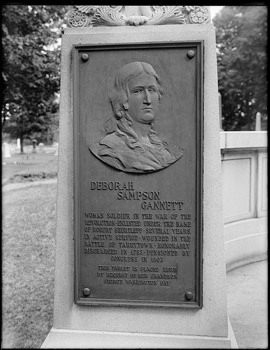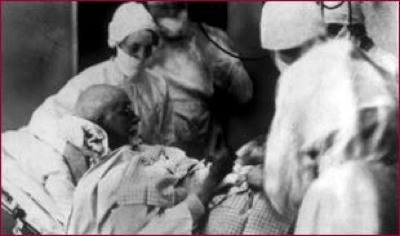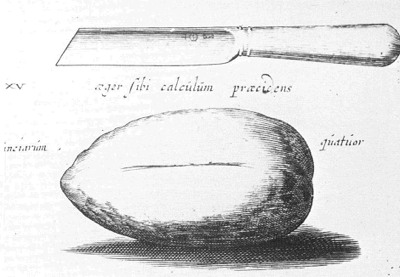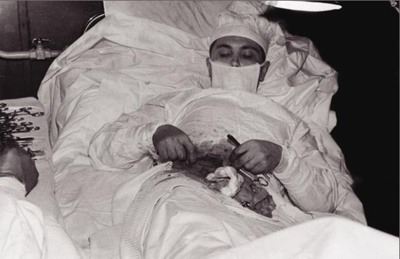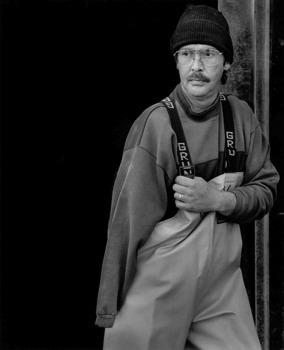 Weird Stuff
Weird Stuff  Weird Stuff
Weird Stuff  Politics
Politics 10 Political Scandals That Sent Crowds Into the Streets
 Weird Stuff
Weird Stuff Ten Bizarre Facts About The Doge Meme
 Our World
Our World 10 Ways Your Christmas Tree Is More Lit Than You Think
 Movies and TV
Movies and TV The 10 Coolest Stars to Set Sail on The Love Boat
 History
History 10 Things You Didn’t Know About the American National Anthem
 Technology
Technology Top 10 Everyday Tech Buzzwords That Hide a Darker Past
 Humans
Humans 10 Everyday Human Behaviors That Are Actually Survival Instincts
 Animals
Animals 10 Animals That Humiliated and Harmed Historical Leaders
 History
History 10 Most Influential Protests in Modern History
 Weird Stuff
Weird Stuff 10 Funny Ways That Researchers Overthink Christmas
 Politics
Politics 10 Political Scandals That Sent Crowds Into the Streets
 Weird Stuff
Weird Stuff Ten Bizarre Facts About The Doge Meme
Who's Behind Listverse?

Jamie Frater
Head Editor
Jamie founded Listverse due to an insatiable desire to share fascinating, obscure, and bizarre facts. He has been a guest speaker on numerous national radio and television stations and is a five time published author.
More About Us Our World
Our World 10 Ways Your Christmas Tree Is More Lit Than You Think
 Movies and TV
Movies and TV The 10 Coolest Stars to Set Sail on The Love Boat
 History
History 10 Things You Didn’t Know About the American National Anthem
 Technology
Technology Top 10 Everyday Tech Buzzwords That Hide a Darker Past
 Humans
Humans 10 Everyday Human Behaviors That Are Actually Survival Instincts
 Animals
Animals 10 Animals That Humiliated and Harmed Historical Leaders
 History
History 10 Most Influential Protests in Modern History
Top 10 Incredible Self Surgeries
[WARNING: This list contains some graphic images.] Self-surgery is the act of performing a surgical procedure on oneself. Sometimes it becomes necessity in extreme conditions to perform this act. This list includes 10 such individuals that because of great circumstances found it necessary to do so. It should be mentioned that self castration and self mutilation is actually the most common form of self- surgery and is not included in this list. Just a word of caution: The descriptions and some pictures on this list are not for the squeamish.
Surgical Procedure: Biopsy
Dr. Jerri Lin Nielsen is an American physician with extensive ER experience. In 1998 she was hired to spend a year at the Amundsen-Scott South Pole Station where she would be the only doctor during the winter. In early March 1999, Dr. Jerri Nielsen discovered a lump in her right breast. After consulting US physicians via email and video conference she performed a biopsy upon herself. The results were inconclusive because the material used on site was too outdated to allow for a precise diagnosis. It was then decided to send a military plane to airdrop supplies and medication for her treatment. Using the new supplies, she performed another biopsy which allowed for better scans to be sent to the US, where it was confirmed that the cells were cancerous. With the help of her makeshift medical team, Nielsen then began self-administering chemotherapy. In October a military transport aircraft was sent several weeks ahead of schedule to bring her back home. Once back in the United States, after multiple surgeries, complications and a mastectomy Nielsen went into remission.
Interesting Fact: Nielson became a motivational speaker and wrote a book about her experience. The book (Ice Bound) was later adapted into a made-for-TV movie starring Susan Sarandon.
Surgical Procedure: Trepanation
Amanda Feilding is a British artist and scientific director. Feilding suffered from a condition that left her feeling exhausted and spent years looking for a reputable surgeon who would perform a technique known as trepanning. This is a procedure where a tiny portion of the skull is drilled into to allow blood to flow more easily around the brain. Eventually she gave up and at age 27 she decided to do the surgery herself. She was equipped with a dentist’s electric drill operated by a foot pedal she then taped dark glasses to her face to stop the blood running into her eyes. She first made an incision with a scalpel and then drilled, dipping the drill bit in water every so often to cool it down. She lost almost a liter of blood but she was pleased with her surgery. Over the next four hours she noticed herself rising up with a feeling of elation and relaxation. Feilding says, “I went out and had steak for supper, and then I went to a party.”
Interesting Fact: Feilding made a short cult art film entitled ‘Heartbeat in the Brain’ and is shown only to invited audiences. She also ran for British Parliament twice, on the platform ‘Trepanation for the National Health’ with the intention of drawing attention to the fact that its potential benefits should be scientifically investigated.
Surgical Procedure: Extraction of Musket Ball
Deborah Sampson was actually mentioned in the “Top 10 Men Who Were Really Women” list as a notable omission. In 1782 Deborah Sampson was enlisted in the Fourth Massachusetts Regiment of the Continental Army. Going by the name of Robert Shutleff she was strong and tall enough to look like a man and it was thought she didn’t have to shave because she was a very young man. When her unit was sent to West Point, New York she was wounded in a battle nearby. She was taken to a hospital to be treated but snuck out so that she would not be discovered to be a woman. She operated on herself and removed one of the musket balls out of her thigh with a penknife and sewing needle. When she recovered from her wound she went back to her regiment. The next time Sampson was wounded her doctor found out she was a woman and in 1783 he arranged for her to be discharged from the Continental Army.
Interesting Fact: Due to her wounds, Gannett received a military pension from the United States of America. Later, in 1838, Congress passed a special act granting a pension to her heirs.
Surgical Procedure: Appendectomy and Inguinal Hernia Repair
Dr. Evan O’Neill Kane was a pioneer in the medical profession and chief surgeon of New York City’s Kane Summit Hospital. Kane wanted to prove to the world that general anesthesia was often unnecessary for minor operations. He used himself for a test case and operated on himself removing his own appendix using only local anesthetic. Dr. Kane propped himself up on the operating table with a mirror over his abdomen and three other doctors in the operating room as backup. Kane made the large incision needed to remove the appendix and his assistants sutured him up. (This was before new techniques allowed doctors to make small ‘Band-Aid’-size incisions for appendix removal). Then, in 1932, at age 70, Dr. Kane performed an even more complicated surgery on himself to repair an inguinal hernia. Because of the close proximity to the femoral artery it was a particularly delicate operation which Kane performed it in just under two hours.
Interesting Fact: The photo above is from his hernia repair and when performing the surgery Kane was very relaxed and even joking as he came within millimeters of important blood vessels.
Surgical Procedure: Lithotomy (Removal of stones formed inside certain hollow organs such as the bladder and kidneys)
I found this particularly interesting because this self surgery occurred over 360 years ago. Dr. Nicolaes Tulp was a Dutch surgeon and mayor of Amsterdam. Below is the exact text from his book “Observationes medicae” In this case he describes Joannes Lethaeus who was a blacksmith who performed Lithotomy surgery on himself. The illustration above is also from Dr. Tulp’s book and displays the stone that Lethaeus removed from his own kidney and the knife that he used.
Having decided that no one but himself would cut into his flesh, he sent his wife to the fish market, which she didn’t mind doing. Only letting his brother help him, he instructed him to pull aside his scrotum while he grabbed the stone in his left hand and cut bravely in the perineum with a knife he had secretly prepared, and by standing again and again managed to make the wound long enough to allow the stone to pass. To get the stone out was more difficult, and he had to stick two fingers into the wound on either side to remove it with leveraged force, and it finally popped out of hiding with an explosive noise and tearing of the bladder. Now the more courageous than careful operation was completed, and the enemy that had declared war on him was safely on the ground, he sent for a healer who sewed up the two sides of the wound together, and the opening that he had cut himself, and properly bound it up; the flesh of which grew so happily that there no small hope of health was, but the wound was too big, and the bladder too torn, not to have ulcers forming. But this stone weighing 4 ounces and the size of a hen’s egg was a wonder how it came out with the help of one hand, without the proper tools, and then from the patient himself, whose greatest help was courage and impatience embedded in a truly impenetrable faith which caused a brave deed as none other.
Interesting Fact: There is an oil painting by Rembrandt called “The Anatomy Lesson of Dr. Nicolaes Tulp” and shows Dr. Nicolaes Tulp (who wrote the above text) explaining the musculature of the arm to medical professionals and is housed in the Mauritshuis museum in The Hague, the Netherlands.
Surgical Procedure: Amputation of Right Arm
In September of 2007 Parker a Farmer from South Carolina was harvesting corn when some stalks got stuck in a set of rollers that shuck the cut corn. He reached in the still-running machine to pull the stalks out and the rollers grabbed first his glove and then his hand. Parker tried yelling for help, but there was no one near the isolated field in Kershaw County. For more than an hour, he tried to pull his hand free, only to have it pulled ever further into the machinery. He was able to reach an iron bar and jam it into a chain-and-sprocket that drove the rollers, and, with his fingers growing numb he pulled out a small pocketknife and started to cut his own fingers off to free himself. Before he could do that the sprocket grinding against the rod he’d jammed in it threw off sparks and set the ground litter on fire. Parker then knew he had to cut his arm off or die right there. Parker credits the fire with keeping him from passing out from the shock of cutting through his arm. When he got down to the bone, he dropped onto the ground, using the force of his own weight to break the bone and free him from the machine. When he was finally loose he got in his pickup truck and started driving his truck into the middle of the road to force a car to stop. Finally a motorist stopped and a rescue helicopter was called in to take him to a hospital. Parker spent three weeks in a burn center before going home.
Interesting Fact: While he was recuperating, about 25 of his neighbors got together to finish harvesting his corn,
Surgical Procedure: Appendectomy
At the age of 27 Soviet Doctor Leonid Rogozovwas was stationed at the Novolazarevskaya base in the Antarctic. The doctor recognized his own acute appendicitis and worsening condition. Because of the absence of a support aircraft and inclement weather along with the danger of a burst appendix the doctor decided he would have to perform surgery on himself. With the team’s meteorologist holding the retractors, a driver to hold the mirror and other scientists passing surgical implements, he sat in a reclined position and cut out his own appendix under local anesthetic. During the operation he passed out, but was able to continue and complete the procedure in little less than two hours.
Interesting Fact: A detailed report was written by Dr Rogozov documenting the unusual event along with the photo shown above. The doctor made a full recovery and resumed all duties in two weeks.
Surgical Procedure: Amputation of Right Arm
In 1998 Douglas Goodale a 35 year old lobster fisherman from Maine was hauling lobster pots up from the sea floor. When he reached his first trap and started pulling up his catch a huge wave hit the boat creating a slack in the rope which then spooled around the drum. As he reached to turn off the drums motor and untangle the rope his sleeve got caught in the winch. Within seconds the winch had taken hold of his hand and his arm. Alone and unable to free himself and his body hanging outside the boat, the fisherman’s survival instincts took over and used his good arm to pull his body back into the boat. Because of the way his right arm was twisted he had to dislocate the shoulder joint of his injured arm in the process. The only way for Goodale to free himself was to cut off his own arm. Thinking about his wife and two daughters, Goodale grabbed his twine knife and began to saw off his right arm. The cold ocean water and the twisting had cinched up the wounds and helped to reduce blood loss. Goodale then managed to pilot his boat back into the harbor to get medical help.
Interesting Fact: Having only one arm has not kept Goodale from two seasons of lobstering and from completely overhauling his 35’ wooden boat down to the bare planks. Goodale was also featured in the television show “Extreme Makeover: Home Edition” where 1,000 volunteers Goodale’s double-wide mobile home with a $500,000 log home.
Surgical Procedure: Amputation of Right Arm
Aron Ralston’s experience made international news so many will be familiar with his story. Ralston is an American mountain climber and a mechanical engineer. He left his career in engineering to climb all of Colorado’s “fourteeners”, or peaks over 14,000 feet high. In 2002 while he was on a canyoneering trip alone in Blue John Canyon a boulder fell and pinned his right forearm. After five days of unsuccessfully trying to lift or break the boulder, a dehydrated and delirious Ralston prepared to cut off his already dead arm. Using a dull blade he cut the soft tissue around the break and then used the tool’s pliers to tear at the tougher tendons. Finally freed, Ralston was still 8 miles from his truck he had to rappel down a 65-ft cliff, then hike out of the canyon. Eventually he met with other hikers and was given food and water. Aron was finally transported to St. Mary’s Hospital in Grand Junction Colorado for surgery.
Interesting Fact: Later Ralston’s arm was retrieved by park authorities and removed from under the boulder. It was cremated and given to Ralston. He later returned to the boulder and left the ashes there. Aron Ralston still enjoys mountain climbing with the aid of a prosthetic arm.
Surgical Procedure: Caesarean Section
Ramírez Pérez lives in rural Rio Talea Mexico which has 500 people and only one phone. In March of 2000 the 40-year-old mother of seven was alone in her cabin when her labor started. She assumed her birthing position by sitting up and leaning forward. At midnight after 12 hours of continual pain and little advancement in labor and rather than experience another fetal death that occurred from her last pregnancy Ramírez decided to operate on herself. She drank from either a bottle of rubbing alcohol or 3 small glasses of hard liquor” (different accounts vary). She then grabbed a 15-cm knife and began to cut. Ramirez sawed through skin, fat and muscle and after operating on herself for an hour she reached inside her uterus and pulled out her baby boy who breathed and cried immediately. She says she cut his umbilical cord with a pair of scissors and then passed out. When she regained consciousness she wrapped clothes around her bleeding abdomen and asked her 6-year-old son to run for help. Several hours later the village health assistant found Ramírez alert and lying beside her healthy baby. She was then taken to the nearest hospital eight hours away by car and underwent surgery to repair complications resulting from damage to her intestines incurred during her C-section. She was then released from the hospital and made a complete recovery.
Interesting Fact: Ramírez is believed to be the only woman known to have performed a successful caesarean section on herself. Her case was written up in the March 2004 issue of the International Journal of Obstetrics and Gynecology.


